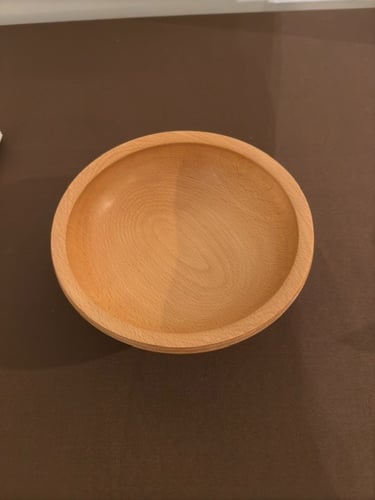
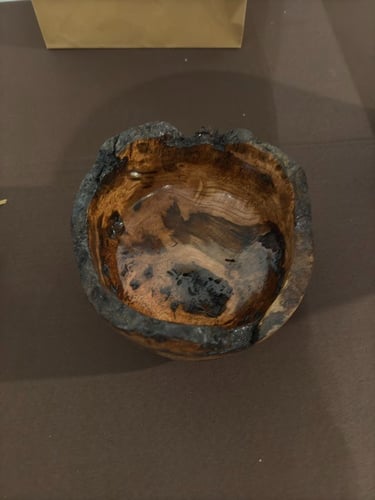
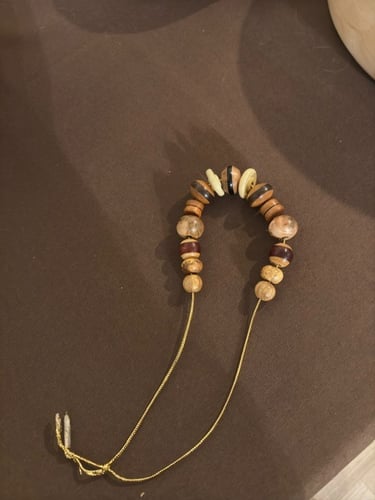
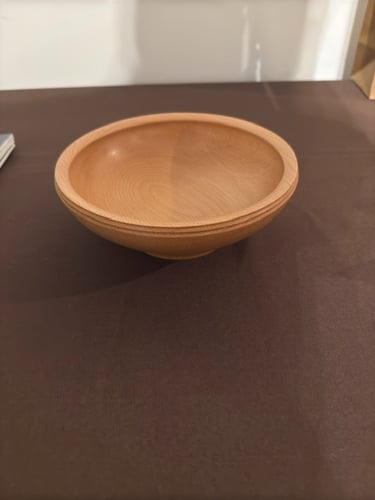
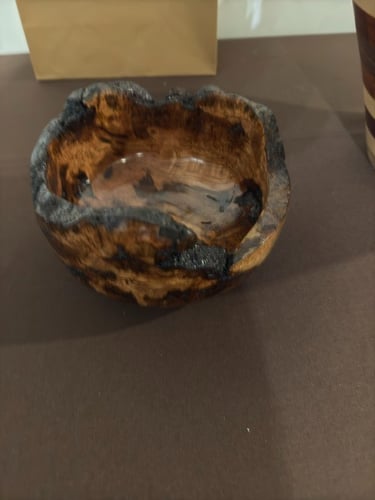
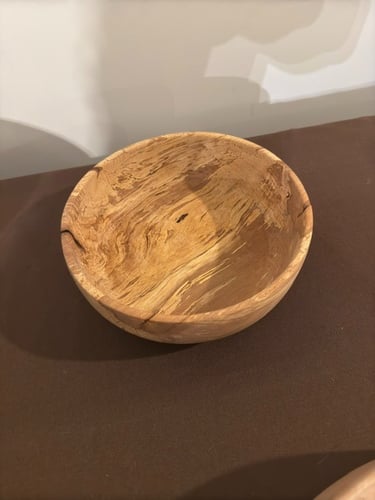
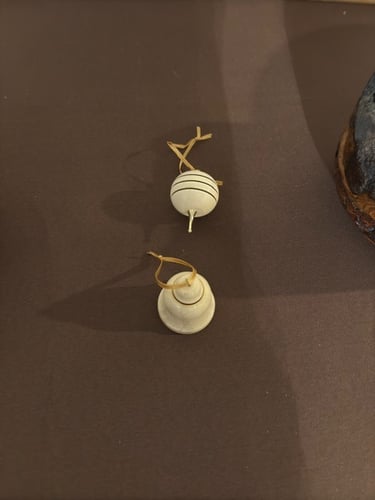
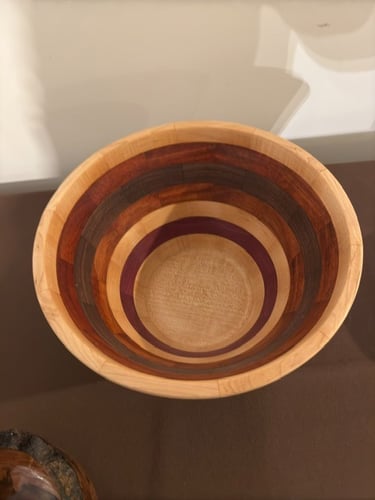
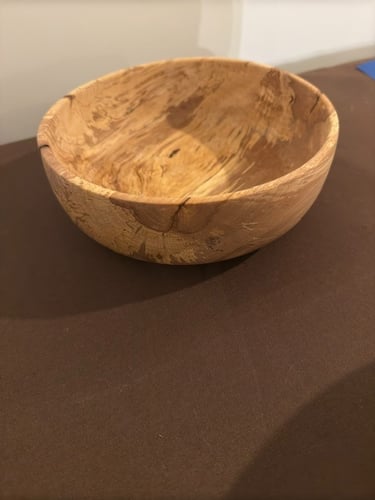









Show & Tell
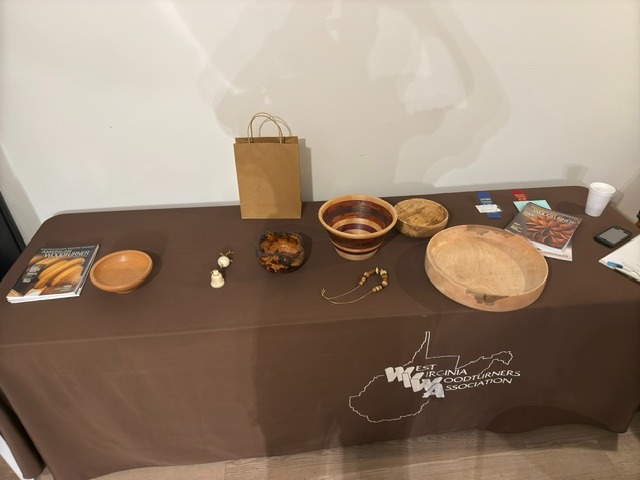

Demonstration
Turning a Kitchen Scoop - Cliff Baker
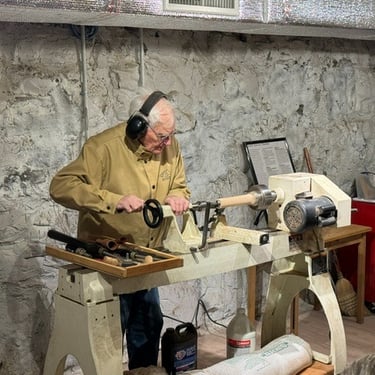
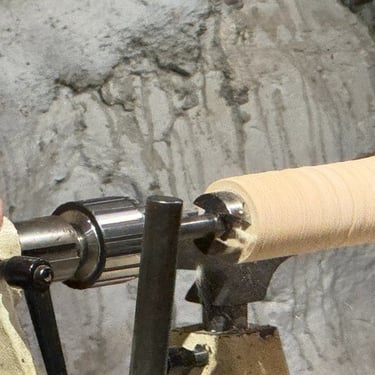
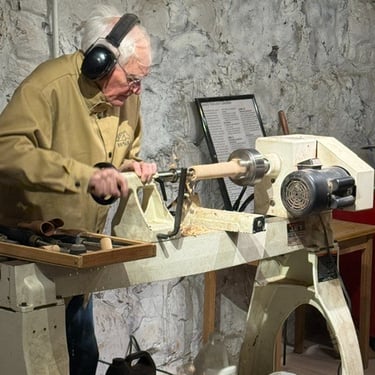
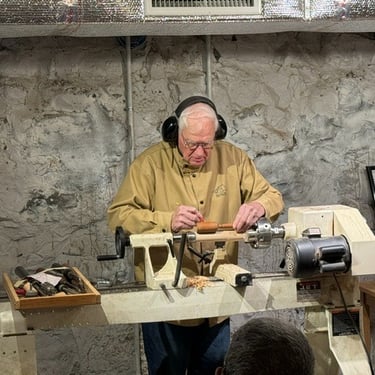
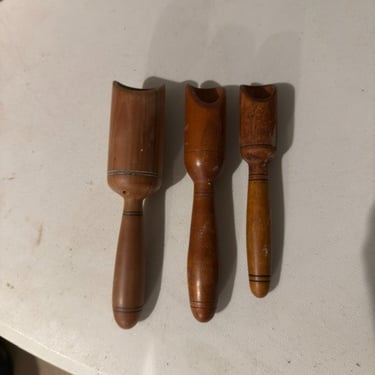
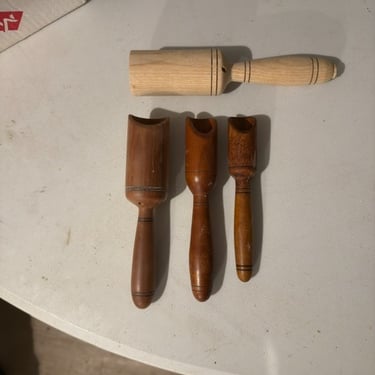
Key Steps & Comments
Items contacting food should be made from a tight-grained wood such as maple or cherry. In open pore woods such as red oak, bacteria can remain in the pores.
Square blanks can be safely gripped with a four-jaw chuck although the tailstock with a live center should be used to stabilize the workpiece whenever possible.
A 1 3/8" bit was used to hollow the scoop, each 5/8" of depth is equivalent to one tablespoon. To make a 1/4 cup scoop, the scoop should be 2 1/2" deep and the end should be cut at an angle so bore an extra 1/2".
If the scoop will be used to measure flour or some other fine material, a vent hole needs to be drilled at the bottom of the scoop so it can be filled. The vent should be at an angle to avoid blowing flour dust into the room.
Calibrate the scoop by carefully measuring the desired amount of material such as rice and pouring it into the scoop. Tilt the filled scoop at an angle and mark where the rice comes to and cut the scoop along that line. Cutting can be done most easily before the scoop has been parted off.
If the scoop and handle will be embellished with a burnt ring, that should be done before the end of the handle is rounded over prior to parting off. Location of the burnt rings should be marked with a very small vee groove to keep the wire in the proper location
